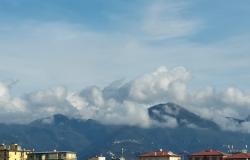Post-Ferragosto Blues: How to Cope
ITA:

Use player to listen to Italian version
Despite the economic crisis and changing habits, Italians still treasure their August vacation. Come September though, many will suffer from the dreaded ‘return syndrome,’ a state of discomfort associated with anxiety, grumpiness, fatigue, insomnia and even mild depression, which is said to affect one in three Italians returning to work and their daily routines – the longer they’ve been on holiday, the worst the symptoms. Here’s how to best cope with post-Ferragosto blues.
Get a good night’s sleep; try to avoid going straight from the 8-10 hours of sleep enjoyed during vacation to the 6-7 of your regular life. If you have trouble falling asleep, try a warm bath and a herbal tea before going to bed.
Get back into your regular life gradually by returning home a couple of days before resuming work.
Be physically active, this is crucial to lessen stress and rest better.
Eat healthy. Carbs are good as the brain needs sugar as long as you don’t exaggerate: simple carbs like honey, fruit and preserves, and complex ones like pasta, rice, bread and cereals, preferably wholegrain, are all fine.
Spend time outside. The change from the many hours of natural light enjoyed on the beach or in the mountains to the artificial light of the office may cause stress to the body and mind. Have your lunch break outside.
Take mini breaks every 15 minutes, get up from your desk and walk around or stretch a bit.
Don’t use digital devices in bed. Read a book instead.
Take a weekend off or devote it to family, friends, relaxation, and your favorite hobbies, as if vacation hadn’t ended; it will help you recharge.
Be positive.
Nonostante la crisi economica e le abitudini cambiate, gli italiani sono ancora molto legati alle ferie d’agosto. All’arrivo di settembre però, molti di loro cadono vittime della indesiderata ‘sindrome da rientro’, uno stato di disagio associato ad ansia, irritabilità, spossatezza, insonnia e persino lieve depressione, che si dice colpisca almeno un italiano su tre che torna al lavoro e alla routine quotidiana: più a lungo si è stati in vacanza, peggiori sono i sintomi. Ecco come affrontare al meglio la sindrome da rientro.
Dormi molto e bene; cerca di evitare di passare bruscamente dalle 8-10 ore di sonno delle vacanze alle 6-7 della tua vita normale. Se hai problemi ad addormentarti, fai un bagno caldo e bevi una tisana prima di andare a letto.
Torna alla tua vita normale gradualmente rientrando dalle ferie un paio di giorni prima di riprendere il lavoro.
Sii fisicamente attivo, è fondamentale per ridurre lo stress e riposare meglio.
Mangia sano. I carboidrati vanno bene in quanto il cervello ha bisogno di zucchero purché non si esageri: carboidrati semplici come miele, frutta e conserve e complessi come pasta, riso, pane e cereali, preferibilmente integrali.
Trascorri del tempo all’aria aperta. Il passaggio dalle molte ore di luce naturale godute sulla spiaggia o in montagna alla luce artificiale dell'ufficio può causare stress al corpo e alla mente. Fai la tua pausa pranzo fuori.
Fai delle mini pause ogni 15 minuti, alzati dalla scrivania e cammina o allungati un po'.
Non usare dispositivi elettronici a letto. Piuttosto, leggi un libro.
Prenditi un weekend libero e dedicalo alla famiglia, agli amici, al relax e ai tuoi hobby preferiti, come se la vacanza non fosse finita; ti aiuterà a ricaricarti.
Abbi un atteggiamento positivo.











